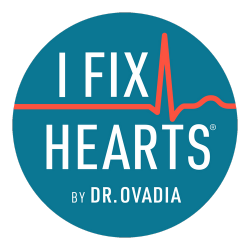I’m confident that before you found my website, you had heard of heart disease. Perhaps not all the different types and risk factors, but that you were aware of heart disease in general. It’s a common medical condition, mentioned alongside cancer and diabetes.
Not everyone has heard of cardiovascular disease (CVD), though. My mission is to empower you with the information you need to live a healthy life, so in this article I’m going to take you through cardiovascular disease and how to improve both heart and cardiovascular health.
What is cardiovascular disease?
The National Heart, Lung, And Blood Institute (NHLBI) defines cardiovascular disease as:
“…the term for all types of diseases that affect the heart or blood vessels, including coronary heart disease (clogged arteries), which can cause heart attacks, stroke, congenital heart defects and peripheral artery disease.”
In other words, cardiovascular disease is an umbrella term that includes all heart disease in addition to other conditions.
The types of cardiovascular disease
As it’s an umbrella term, there are many different types of CVD. I’ll focus on the main four:
Aortic disease
The aorta is the body’s largest blood vessel, running from the heart through the abdomen, and aortic diseases refer to conditions that affect it.
A common aortic disease is an aortic aneurysm, which can lead to the aorta bursting. In many cases, an aortic aneurysm has no symptoms and is typically found during other tests. However, if you notice abdominal swelling, a pulsing sensation or persistent stomach pain, it’s worth visiting a doctor to be safe.
Coronary heart disease
Coronary heart disease is when plaque blocks the coronary arteries, reducing the amount of blood that reaches the heart. The additional strain on the heart can lead to:
- Heart failure, which is when the heart can no longer pump blood properly
- Heart attacks, in which blockages stop blood reaching the heart
- Angina, where restricted blood flow caused chest pain
Peripheral arterial disease
With peripheral arterial disease, a blockage occurs in the arteries of the limbs – most commonly the legs. As with aortic aneurysms, many people have either no symptoms or symptoms that are easy to overlook. For example, you may experience a painful ache when you walk, but dismiss it because it disappears after some rest. Other symptoms include weakness or numbness in the legs, hair loss on the legs and feet, changes to the skin on your legs, and reduction in muscle mass.
Strokes and TIAs
Strokes are caused when a blockage stops blood from reaching the brain. A transient ischaemic attack (TIA), sometimes called a mini-stroke, is the same except the disruption to the blood flow is only temporary.
Treatment options for cardiovascular disease
The different types of cardiovascular disease mostly share similar treatment options. Medications can help to lower blood pressure, relax the arteries, or address other symptoms, and surgery may be needed to clear blockages, open up the arteries or even perform a heart transplant.
With each condition, treatment also includes lifestyle changes, such as giving up smoking, taking up exercise, and eating healthier foods.
How to prevent cardiovascular disease
The best way to prevent cardiovascular health is by making decisions that increase heart health and improve cardiovascular health.
Each cardiovascular disease shares the same risk factors: high blood pressure, high cholesterol, diabetes, obesity, inactivity, and a poor diet.
Each of these risk factors is an indication that a person is in poor metabolic health. So if you want to prevent cardiovascular health, you should focus on fixing your metabolic health. Doing this will mean you’re eating properly, exercising regularly, maintaining a healthy weight, and have good blood panels.
The best part is you can start to see improvements very quickly, which also means your risk for cardiovascular disease can start to reduce quickly too.
To discover if you’re metabolically healthy and at risk for cardiovascular disease, I invite you to take my free metabolic health quiz and take control of your future today.
